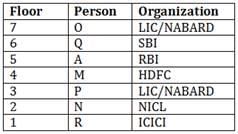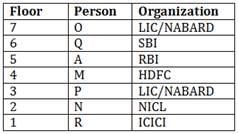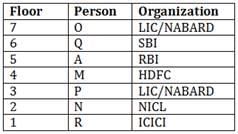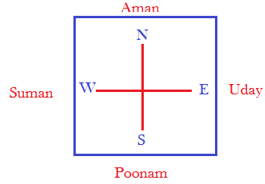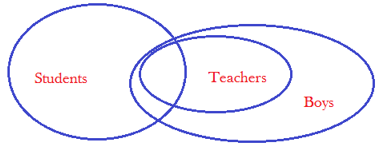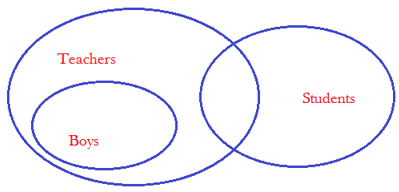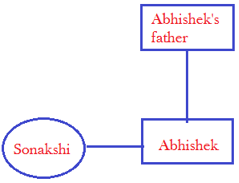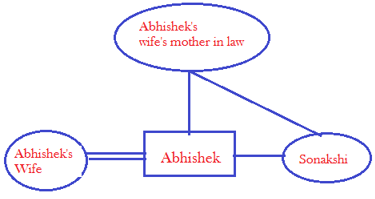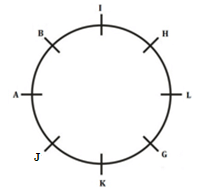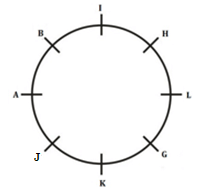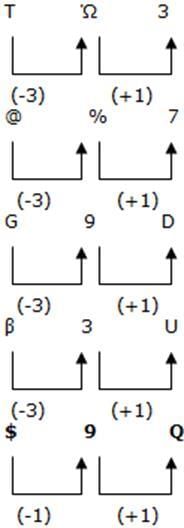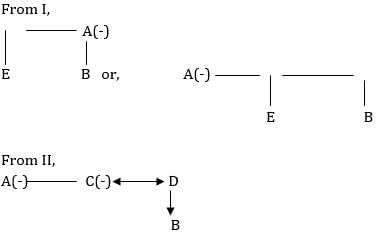Syndicate Bank PO Mock Test - 3 - Banking Exams MCQ
30 Questions MCQ Test - Syndicate Bank PO Mock Test - 3
Direction: Study the information given below and answer the questions based on it.
Seven friends M, N, O, P, Q, R and A live on a separate floors of a 7-floor building. Ground floor is numbered as 1, first floor is numbered is as 2 and so on until the topmost floor is numbered 7. Each of them works in a Bank or Insurance Companies viz, SBI, RBI, LIC, NABARD, ICICI, HDFC and NICL but not necessarily in the same order. Only three people live between Q and the one who works in NICL. Q lives above the one who works in NICL. Only two people live between the ones who works in NICL and RBI. The one who works in HDFC lives immediately above P. P works in neither RBI nor NICL. P does not live on an even numbered floor. The one who lives immediately below O works in SBI. The one who works in SBI does not live on the lowermost floor. O works in neither HDFC nor RBI. R works in ICICI. A does not live immediately above or immediately below P. N does not work in HDFC.
Q. Who among the following lives on floor no. 2?
Seven friends M, N, O, P, Q, R and A live on a separate floors of a 7-floor building. Ground floor is numbered as 1, first floor is numbered is as 2 and so on until the topmost floor is numbered 7. Each of them works in a Bank or Insurance Companies viz, SBI, RBI, LIC, NABARD, ICICI, HDFC and NICL but not necessarily in the same order. Only three people live between Q and the one who works in NICL. Q lives above the one who works in NICL. Only two people live between the ones who works in NICL and RBI. The one who works in HDFC lives immediately above P. P works in neither RBI nor NICL. P does not live on an even numbered floor. The one who lives immediately below O works in SBI. The one who works in SBI does not live on the lowermost floor. O works in neither HDFC nor RBI. R works in ICICI. A does not live immediately above or immediately below P. N does not work in HDFC.
Direction: Study the information given below and answer the questions based on it.
Seven friends M, N, O, P, Q, R and A live on a separate floors of a 7-floor building. Ground floor is numbered as 1, first floor is numbered is as 2 and so on until the topmost floor is numbered 7. Each of them works in a Bank or Insurance Companies viz, SBI, RBI, LIC, NABARD, ICICI, HDFC and NICL but not necessarily in the same order. Only three people live between Q and the one who works in NICL. Q lives above the one who works in NICL. Only two people live between the ones who works in NICL and RBI. The one who works in HDFC lives immediately above P. P works in neither RBI nor NICL. P does not live on an even numbered floor. The one who lives immediately below O works in SBI. The one who works in SBI does not live on the lowermost floor. O works in neither HDFC nor RBI. R works in ICICI. A does not live immediately above or immediately below P. N does not work in HDFC.
Q. How many people live between the floors on which A and the one works in NICL live?
Seven friends M, N, O, P, Q, R and A live on a separate floors of a 7-floor building. Ground floor is numbered as 1, first floor is numbered is as 2 and so on until the topmost floor is numbered 7. Each of them works in a Bank or Insurance Companies viz, SBI, RBI, LIC, NABARD, ICICI, HDFC and NICL but not necessarily in the same order. Only three people live between Q and the one who works in NICL. Q lives above the one who works in NICL. Only two people live between the ones who works in NICL and RBI. The one who works in HDFC lives immediately above P. P works in neither RBI nor NICL. P does not live on an even numbered floor. The one who lives immediately below O works in SBI. The one who works in SBI does not live on the lowermost floor. O works in neither HDFC nor RBI. R works in ICICI. A does not live immediately above or immediately below P. N does not work in HDFC.
Direction: Study the information given below and answer the questions based on it.
Seven friends M, N, O, P, Q, R and A live on a separate floors of a 7-floor building. Ground floor is numbered as 1, first floor is numbered is as 2 and so on until the topmost floor is numbered 7. Each of them works in a Bank or Insurance Companies viz, SBI, RBI, LIC, NABARD, ICICI, HDFC and NICL but not necessarily in the same order. Only three people live between Q and the one who works in NICL. Q lives above the one who works in NICL. Only two people live between the ones who works in NICL and RBI. The one who works in HDFC lives immediately above P. P works in neither RBI nor NICL. P does not live on an even numbered floor. The one who lives immediately below O works in SBI. The one who works in SBI does not live on the lowermost floor. O works in neither HDFC nor RBI. R works in ICICI. A does not live immediately above or immediately below P. N does not work in HDFC.
Q. Which of the following is true with respect to M as per the given information?
Seven friends M, N, O, P, Q, R and A live on a separate floors of a 7-floor building. Ground floor is numbered as 1, first floor is numbered is as 2 and so on until the topmost floor is numbered 7. Each of them works in a Bank or Insurance Companies viz, SBI, RBI, LIC, NABARD, ICICI, HDFC and NICL but not necessarily in the same order. Only three people live between Q and the one who works in NICL. Q lives above the one who works in NICL. Only two people live between the ones who works in NICL and RBI. The one who works in HDFC lives immediately above P. P works in neither RBI nor NICL. P does not live on an even numbered floor. The one who lives immediately below O works in SBI. The one who works in SBI does not live on the lowermost floor. O works in neither HDFC nor RBI. R works in ICICI. A does not live immediately above or immediately below P. N does not work in HDFC.
Direction: In the following question, two statements denoted as Assertion (A) and Reason (R) are given. Choose the correct alternative from the following options.
Assertion (A): Scientists are looking for new sustainable methods to produce electricity.
Reason (R): The consumption of electricity and the accompanying depletion of fossil fuels have been growing alarmingly fast. Also, existing renewable sources like Wind energy have high cost and low efficiency.
Direction: In the following question, a statement is given followed by two course of action. Assuming everything given in the statement is true, decide which of the option logically worth pursuing.
Statement: The students of an English medium school was found to be speaking in regional language even when the school policy specifies English as medium of communication inside campus.
Course of action:
I. Students should be fined a heavy amount for speaking in regional language.
II. Regional language should be taken out of the syllabus so that there won’t be any opportunity for students to break the language rule inside the campus.
Direction: In the question, a relationship between different elements is shown in the statements. The statements are followed by conclusions. Find which of the conclusion follows the given statements.
Q. Z ≥ X ≥ C < V, B > N < J = L, K < J ≤ G < C
Direction: In the question, a relationship between different elements is shown in the statements. The statements are followed by conclusions. Find which of the conclusion follows the given statements.
Q. P > O = I ≥ Y, Q = W ≤ D ≥ H, G < Y ≥ D > F
Direction: In the question, a relationship between different elements is shown in the statements. The statements are followed by conclusions. Find which of the conclusion follows the given statements.
Q. A ≤ S > D ≤ F, G < B ≥ J = K, V < B < N ≤ D
Direction: Study the information given below and answer the question based on it.
Seven persons P, Q, R, S, T, U and V belong to the same family. It’s a three generation family and two couples are there in the family. P is father of T who is mother of R. V has only one son and V is not married to T. Q is sister of T. U is not father of R.
Q. How is Q related to V?
Direction: Study the information given below and answer the questions based on it.
A word and number arrangement machine when given an input line of words and numbers, rearranges them following a particular rule in each step. The following is an illustration of an input and rearrangement.
Input: Serious 33 large 15 long 7 associated 73 university 64
- Step 1. 7 serious 33 large 15 associated 73 university 64 long
- Step 2. 15 7 serious 33 associated 73 university 64 long large
- Step 3. 33 15 7 associated 73 university 64 long large serious
- Step 4. 64 33 15 7 73 university long large serious associated
- Step 5. 73 64 33 15 7 long large serious associated university
- Step 5 is the last step.
As per the rule followed above steps, answer the following questions based on the following input.
Input: Officer 27 snake 13 soap 1 examination 99 preliminary 84
Q. How many steps are required to get final output?
Direction: Study the information given below and answer the questions based on it.
A word and number arrangement machine when given an input line of words and numbers, rearranges them following a particular rule in each step. The following is an illustration of an input and rearrangement.
Input: Serious 33 large 15 long 7 associated 73 university 64
- Step 1. 7 serious 33 large 15 associated 73 university 64 long
- Step 2. 15 7 serious 33 associated 73 university 64 long large
- Step 3. 33 15 7 associated 73 university 64 long large serious
- Step 4. 64 33 15 7 73 university long large serious associated
- Step 5. 73 64 33 15 7 long large serious associated university
- Step 5 is the last step.
As per the rule followed above steps, answer the following questions based on the following input.
Input: Officer 27 snake 13 soap 1 examination 99 preliminary 84
Q. Find the step which will provide the following output?
27 13 1 examination 99 preliminary 84 soap snake officer
Direction: The question below consists of a question and two statements numbered I and II given below it. You have to decide whether the data provided in the statements are sufficient to answer the question.
Q. Aman, Suman, Poonam and Uday are four friends. They sit around a table square in size. One person sits each side of the square facing the center. Which direction is Aman facing?
I. Aman is opposite Poonam, who is on the immediate left of Uday, who is facing west.
II. Suman is opposite Uday, who is on the immediate right of Poonam, who is facing north.
Direction: The question below consists of a question and two statements numbered I and II given below it. You have to decide whether the data provided in the statements are sufficient to answer the question.
Q. Are some boys are students?
I. Some students are teachers and all teachers are boys.
II. Some teachers are students and all boys are teachers.
Direction: The question below consists of a question and two statements numbered I and II given below it. You have to decide whether the data provided in the statements are sufficient to answer the question.
Q. How is Sonakshi related to Abhishek?
I. Sonakshi’s brother is Abhishek’s father’s only son.
II. Abhishek’s wife’s mother –in-law’s only daughter is Sonakshi.
Note : Sonakshi is a female.
Direction: Study the information given below and answer the questions based on it.
In a certain code language,
- 'Rohan refused drink milk' is coded as - '#4L #5L #5O #7E'
- 'Everyone should eat apple' is coded as - '@3U @8F #6E @5F'
- 'Cycling good for health' is coded as - '#6I #4E #7H #3S'
Q. What must be the code for “Arrow”?
Direction: Study the information given below and answer the questions based on it.
In a certain code language,
- 'Rohan refused drink milk' is coded as - '#4L #5L #5O #7E'
- 'Everyone should eat apple' is coded as - '@3U @8F #6E @5F'
- 'Cycling good for health' is coded as - '#6I #4E #7H #3S'
Q. If all the vowels of the word “University” are removed, then what would be the code for the resulting word?
Direction: Study the information given below and answer the questions based on it.
Eight friends G, H, I, J, K, L, A and B are sitting around a circle in one arrangement, facing centre, and in a straight line in another arrangement where they face south but not necessarily in the same order.
The one who sits on the immediate right of H in the straight line is sitting on the immediate left of H in the circle. K is not on any of the extreme ends. J sits third to the left of L in the straight line. A sits on the immediate right of B in the circle, but they are not immediate neighbours of each other in straight line. The one who sits on the extreme left end sits to the immediate left of K in the circle. B is not the immediate right of L in both arrangements. I and L are the immediate neighbours of H in both arrangements but I is not at the extreme ends of the line. K sits third to the left of H in the circle, while fourth to his right in the straight line. One of the immediate neighbours of B in the straight line sits opposite of B in the circle.
Q. Who is the immediate neighbours of G in circle ?
Direction: Study the information given below and answer the questions based on it.
Eight friends G, H, I, J, K, L, A and B are sitting around a circle in one arrangement, facing centre, and in a straight line in another arrangement where they face south but not necessarily in the same order.
The one who sits on the immediate right of H in the straight line is sitting on the immediate left of H in the circle. K is not on any of the extreme ends. J sits third to the left of L in the straight line. A sits on the immediate right of B in the circle, but they are not immediate neighbours of each other in straight line. The one who sits on the extreme left end sits to the immediate left of K in the circle. B is not the immediate right of L in both arrangements. I and L are the immediate neighbours of H in both arrangements but I is not at the extreme ends of the line. K sits third to the left of H in the circle, while fourth to his right in the straight line. One of the immediate neighbours of B in the straight line sits opposite of B in the circle.
Q. Who sits opposite to L in circle?
Direction: Study the information given below and answer the questions based on it.
Eight friends G, H, I, J, K, L, A and B are sitting around a circle in one arrangement, facing centre, and in a straight line in another arrangement where they face south but not necessarily in the same order.
The one who sits on the immediate right of H in the straight line is sitting on the immediate left of H in the circle. K is not on any of the extreme ends. J sits third to the left of L in the straight line. A sits on the immediate right of B in the circle, but they are not immediate neighbours of each other in straight line. The one who sits on the extreme left end sits to the immediate left of K in the circle. B is not the immediate right of L in both arrangements. I and L are the immediate neighbours of H in both arrangements but I is not at the extreme ends of the line. K sits third to the left of H in the circle, while fourth to his right in the straight line. One of the immediate neighbours of B in the straight line sits opposite of B in the circle.
Q. Which of the following statements is true about G in straight line arrangement ?
In order to protect the honour of women, newly-appointed CM of Uttar Pradesh, Yogi Adityanath ordered the formation of anti-Romeo squads, with an aim to “prevent eve teasing and ensure safety of women”. The decision, however, has come under fire, with the release of numerous footages of innocent men and couples being subjected to harsh treatment instead of actually cracking down on those who stalk and molest women.
Q. Which of the following is a conclusion that can be drawn from the above paragraph?
Direction: Study the following arrangement carefully and answer the questions.

Q. If all the symbols are dropped from the arrangement, then which will be the eleventh element from the right end of the given arrangement?
Direction: Study the following arrangement carefully and answer the questions.

Q. Which of the following is sixth to the left of the fourteenth from the left end of the given arrangement?
Direction: Study the following arrangement carefully and answer the questions.

Q. Four of the following five are alike in a certain way based on their positions in the given arrangement and so form a group. Which is the one that does not belong to the group?
Direction: Study the following information carefully and answer the questions given below.
Ten people are sitting in two parallel rows containing five people each in such a way that there is equal distance between adjacent persons. In row 1, T, U, V, W and X are seated (but not necessarily in the same order) and all of them are facing north. In row 2, O, P, Q, R and S are seated (But not necessarily in the same order) and all of them are facing south. Therefore, in the given seating arrangement each member seated in a row faces another member of the row.
S sits at one of the extreme ends of the line. Only two people sit between S and O. The one who faces O sits on the immediate left of V. Only one person sits between V and U. The one who faces U sits on the immediate left of P. X sits second to the right of T. Neither U or V faces R.
Q. Four of the following five are alike in a certain way based on the given arrangement and hence form a group. Who among the following does not belong to that group?
Direction: Study the following information carefully and answer the questions given below.
Ten people are sitting in two parallel rows containing five people each in such a way that there is equal distance between adjacent persons. In row 1, T, U, V, W and X are seated (but not necessarily in the same order) and all of them are facing north. In row 2, O, P, Q, R and S are seated (But not necessarily in the same order) and all of them are facing south. Therefore, in the given seating arrangement each member seated in a row faces another member of the row.
S sits at one of the extreme ends of the line. Only two people sit between S and O. The one who faces O sits on the immediate left of V. Only one person sits between V and U. The one who faces U sits on the immediate left of P. X sits second to the right of T. Neither U or V faces R.
Q. Which of the following statement is true regarding X?
Direction: Study the information given below and answer the questions based on it.
When a word and number arrangement machine is given an input line of words and numbers, it arranges them following a particular rule. The following is an illustration of input and its rearrangement. (All the numbers are two-digit numbers)
Input: 32 enter come 27 66 round number 52 42 good
- Step I: come enter 27 66 round number 52 42 good 32
- Step II: enter come 27 66 round number 52 good 32 42
- Step III: good enter come 27 66 round number 32 42 52
- Step IV: number good enter come 66 round 32 42 52 27
- Step V: round number good enter come 32 42 52 27 66
And Step V is the last step of the above arrangement as the intended arrangement is obtained . As per the rules followed in the given steps find out the appropriate steps for the given input.
Input: right five 33 43 eager 73 their mouse 21 17 done 27
Q. What is the position of ‘eager’ to the left of ‘73’ in step IV?
Direction: Study the information given below and answer the questions based on it.
When a word and number arrangement machine is given an input line of words and numbers, it arranges them following a particular rule. The following is an illustration of input and its rearrangement. (All the numbers are two-digit numbers)
Input: 32 enter come 27 66 round number 52 42 good
- Step I: come enter 27 66 round number 52 42 good 32
- Step II: enter come 27 66 round number 52 good 32 42
- Step III: good enter come 27 66 round number 32 42 52
- Step IV: number good enter come 66 round 32 42 52 27
- Step V: round number good enter come 32 42 52 27 66
And Step V is the last step of the above arrangement as the intended arrangement is obtained . As per the rules followed in the given steps find out the appropriate steps for the given input.
Input: right five 33 43 eager 73 their mouse 21 17 done 27
Q. How many elements are there between ‘mouse’ and ‘done’ in the last step?
Direction: The questions below consists of a question and two statements numbered I and II. You have to decide whether the data provided in the statements are sufficient to answer the question. Read both the statements and give answer.
Q. How is ‘A’ the girl related to ‘B’?
I. E, the cousin of B, is niece of A.
II. A’s sister C is wife of D, who is father of B.
Direction: The questions below consists of a question and two statements numbered I and II. You have to decide whether the data provided in the statements are sufficient to answer the question. Read both the statements and give answer.
Q. How is the ‘round’ written in a code language?
I. In that code language ‘world is round’ is written as ‘3 2 1’ and ‘sphere also round’ is written as ‘4 3 5’.
II. In that code language ‘globe is round’ is written as ‘6 3 2’ and ‘balls also spin round’ is written as ‘7 8 4 3’
Direction: The question below consists of a question and two statements numbered I and II. You have to decide whether the data provided in the statements are sufficient to answer the question. Read both the statements and give answer.
Q. Among A, B, C, D and E, is A is greater than D?
I. A is either smaller than or equal to B, who is either greater than or equal to C, who is greater than D, who is equal to E.
II. A is greater than B who is equal to C. C is greater than or equal to D who is smaller than or equal to E.


